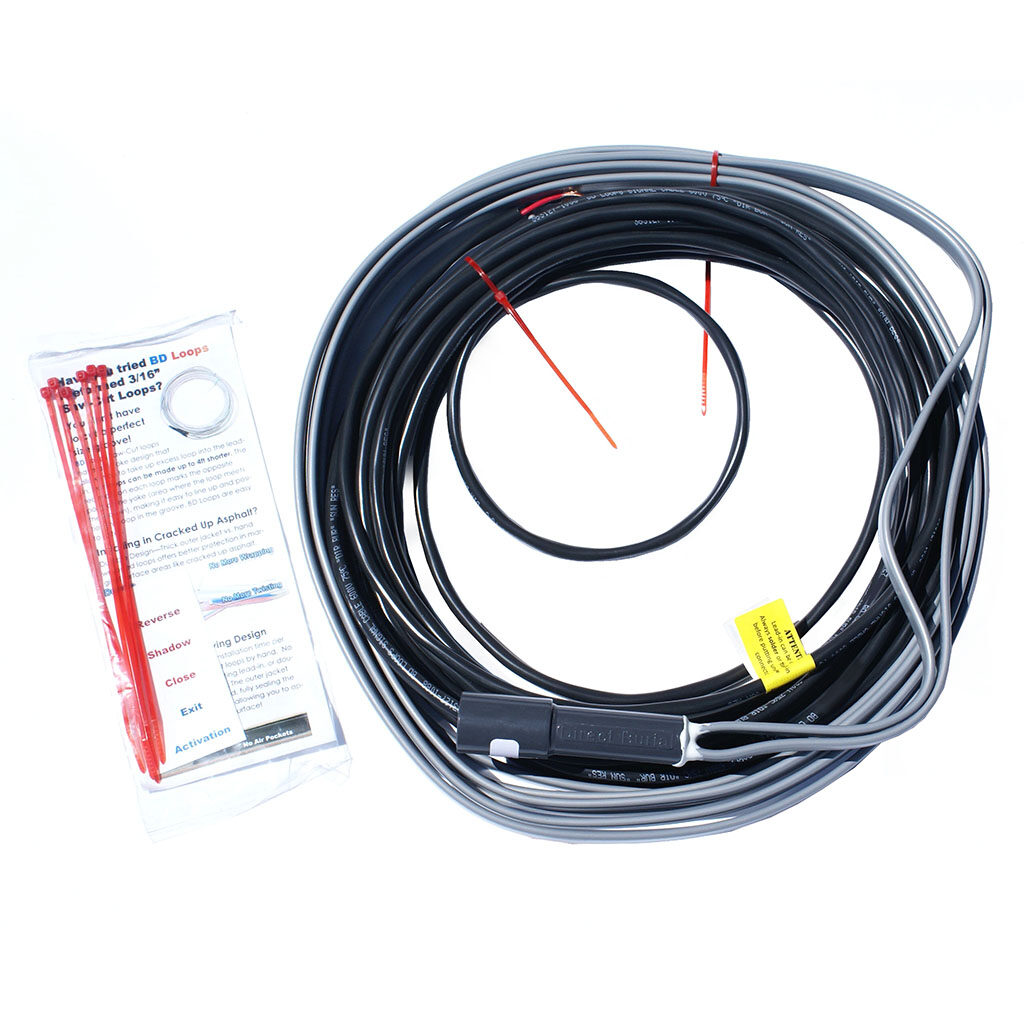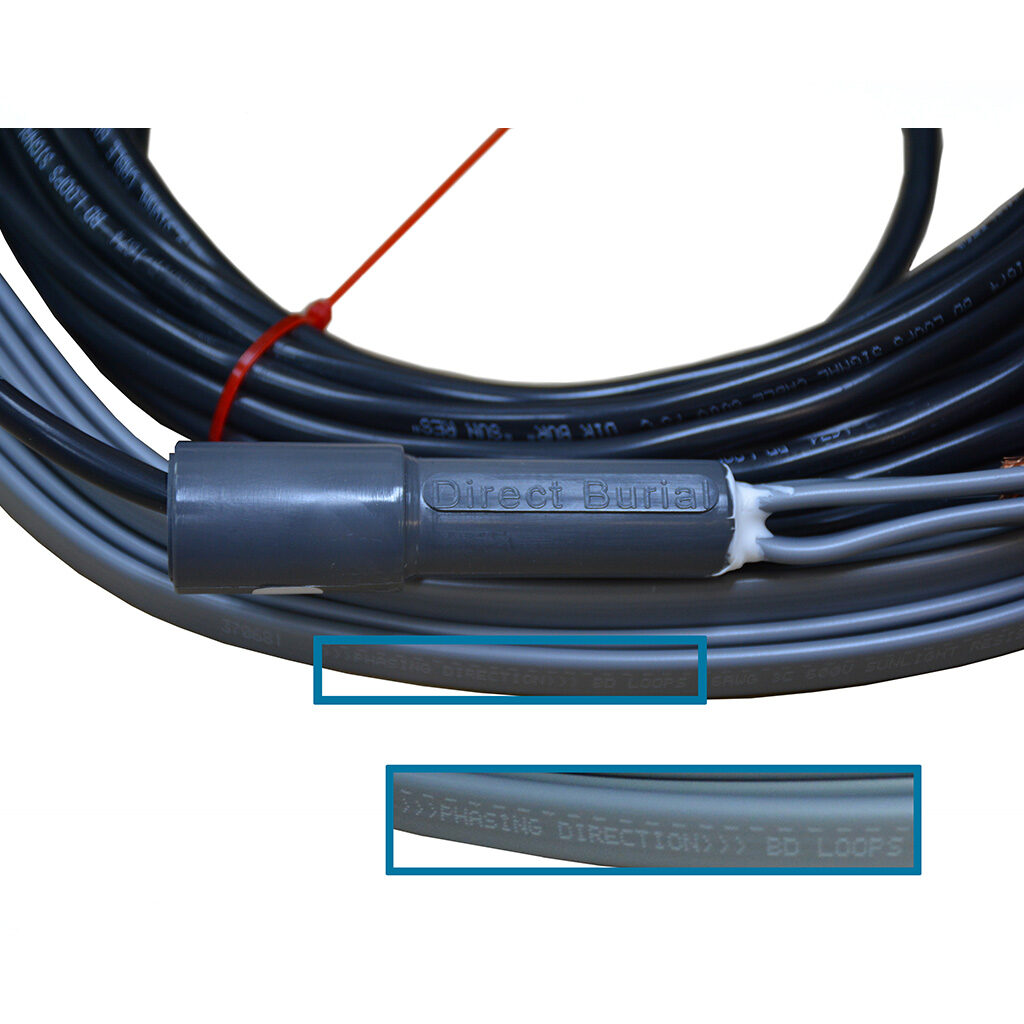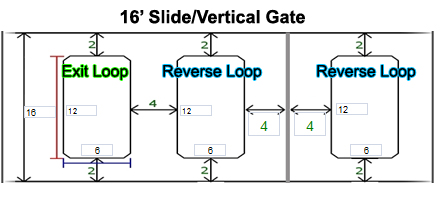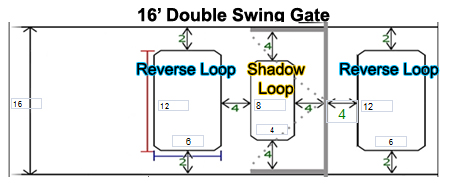description
BD Loops Preformed Direct Burial Inductance Loops are a complete loop with a set size loop and length of lead-in run. Our Direct Burial Loops have an extra layer of protection: a durable outer jacket that protects and tightly binds the inner conductors. All BD Loops are made with 16 AWG copper wire and rated for direct burial use.
Uses
Used for direct burial applications such as in concrete pours, asphalt paving, gravel roads, dirt roads, or under pavers.
Standard Loop Sizes
40′ of Lead-in
| Part# | Description |
| RL 14-40 | 2½’x 4½’ or 3’x 4’ loop with a 40’ lead-in. |
| RL 16-40 | 3’x 5’ or 4’x 4’ loop with a 40’ lead-in. |
| RL 18-40 | 3’x 6’ or 4’x 5’ loop with a 40’ lead-in. |
| RL 20-40 | 3’x 7’ or 4’x 6’ loop with a 40’ lead-in. |
| RL 24-40 | 4’x 8’ or 6’x 6’ loop with a 40’ lead-in. |
| RL 32-40 | 4’x 12’ or 6’x 10’ loop with a 40’ lead-in. |
| RL 36-40 | 6’x 12’ loop with a 40’ lead-in. |
| RL 44-40 | 6’x 16’ loop with a 40’ lead-in. |
| RL 52-40 | 6’x 20’ loop with a 40’ lead-in. |
60′ Of Lead-in
| Part# | Description |
| EL 14-60 | 2½’x4½’ or 3’x4’ loop with a 60’ lead-in. |
| EL 16-60 | 3’x5’ or 4’x4’ loop with a 60’ lead-in. |
| EL 18-60 | 3’x6’ or 4’x5’ loop with a 60’ lead-in. |
| EL 20-60 | 3’x7’ or 4’x6’ loop with a 60’ lead-in. |
| EL 24-60 | 4’x8’ or 6’x6’ loop with a 60’ lead-in. |
| EL 28-60 | 4’x10’ or 6’x8’ loop with a 60’ lead-in. |
| EL 32-60 | 4’x12’ or 6’x10’ loop with a 60’ lead-in. |
| EL 36-60 | 6’x12’ loop with a 60’ lead-in. |
| EL 40-60 | 6’x14’ loop with a 60’ lead-in. |
| EL 44-60 | 6’x16’ loop with a 60’ lead-in. |
| EL 52-60 | 6’x20’ loop with a 60’ lead-in. |
100′ Of Lead-in
| Part# | Description |
| EL 24-100 | 4’x8’ or 6’x6’ loop with a 100’ lead-in. |
| EL 28-100 | 4’x10’ or 6’x8’ loop with a 100’ lead-in. |
| EL 32-100 | 4’x12’ or 6’x10’ loop with a 100’ lead-in. |
| EL 36-100 | 6’x12’ loop with a 100’ lead-in. |
| EL 40-100 | 6’x14’ loop with a 100’ lead-in. |
| EL 44-100 | 6’x16’ loop with a 100’ lead-in. |
| EL 52-100 | 6’x20’ loop with a 100’ lead-in. |
Superior Features
· Extra layer of protection—Thick and durable outer jacket protects both loop and lead-in.
· Each loop is tested 3 ways before it leaves the factory.
· Lead-in wires are tightly bound in an protective outer jacket. Eliminating the need for twisting.
· Flex Yoke Design with 1/2” coupler to accept PVC conduit for protecting the lead-in run.
· The loop section is built with Solid 16AWG copper wire which makes it rigid and easy to form. In a concrete pour it won’t fall below the rebar pattern.
· Unlike loops wrapped through PVC conduit, BD Loops Direct Burial Loops do not have an air pocket resulting in fewer repeat service calls due to phantom detections caused by ground vibration.
· Every direct burial loop comes with zip ties for installation and loop function labels to label the lead-in wires for easy identification after installation.









